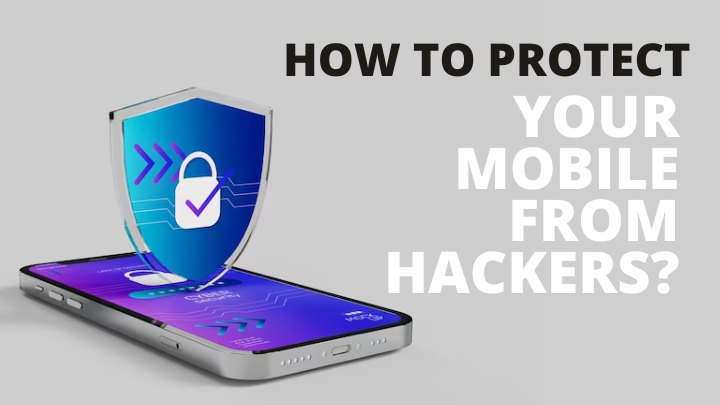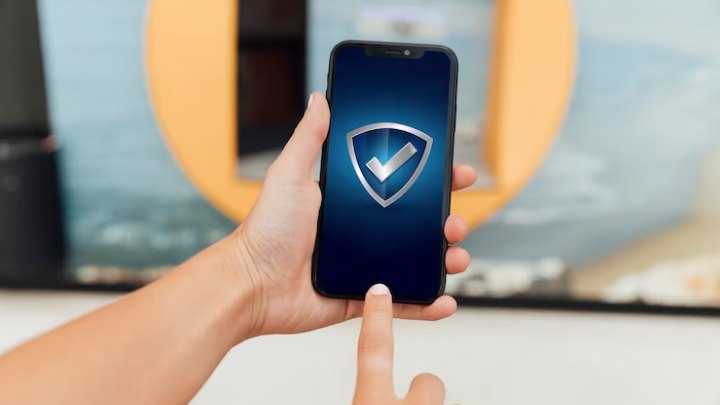
In today’s fast-paced and interconnected world, we have become more dependent on our mobile devices. These include smartphones, tablets, wearables, and Internet of Things (IoT) devices. As a result, mobile technology has greatly changed the way we work and connect with each others.
Apart from being productive and multitasking, it also came with its own negative points. There is a constant concern regarding how to protect mobile and other devices from security breaches. Our mobile devices are akin to digital Swiss Army knives, which contains all our private and sensitive data. It catches the attention of hackers. Unfortunately, while we place a huge effort on cybersecurity services for our business computers and laptops, mobile security often takes a back seat.
That is why this blog covers the significance of mobile security—from the dangers to mobile users to mobile security in corporate settings.
How to protect mobile from common threats?
1. Malware attacks
Malware, also known as malicious software, poses a significant threat to mobile devices. Used by hackers, it contains various types of softwares, which are designed to compromise security of your devices and gain unauthorized access to all the data and personal information. Common forms of malware include viruses, worms, and Trojan horses.
These malicious attacks primarily target vulnerabilities such as weak passwords, insecure Wi-Fi networks, and outdated software on mobile devices. Once a device is infected, the consequences can include unauthorized control of the device, theft of data, and financial losses.
2. Network security
Network security threats are also a significant concern for mobile users. Cybercriminals exploit weaknesses in network connections to intercept and manipulate data. They employ various techniques like phishing, Wi-Fi eavesdropping, and man-in-the-middle attacks to infiltrate mobile devices.
These malicious activities have the potential to lead to financial fraud, identity theft, and unauthorized access to sensitive information. To protect your mobile from such attacks, it is important to remain alert and take necessary precautions.
3. Social engineering attacks
Social engineering attacks uses psychological tactics to manipulate individuals. So, they go for revealing private information or do some out specific actions. The hackers attacks rely on manipulation and deception techniques. One common example is phishing, where hackers send fraudulent emails or messages pretending to be trustworthy organizations in order to deceive recipients into sharing their personal information.
According to a study by Verizon, approximately 36% of data breaches involve social engineering tactics. It also highlights the importance of taking caution when interacting with unfamiliar communications, links, or requests for personal information. Being alert can help safeguard against falling victim to these attacks.

How to protect mobile and enhance security?
The following suggested ideas must be followed to secure your mobile, other devices and data from any kind of unauthorized access from hackers.
1. Creating a strong password
Generate a unique password for your mobile device that includes a combination of letters, numbers, and special characters. Don’t use same password for other accounts. Make sure to remember it. Don’t save it on any device or app.
2. Use of reliable antivirus software
Install trustworthy antivirus software on your devices to detect and remove malware effectively. Never go for any free antivirus solutions. They will do more damage to your system and will slow it down.
3. Keeping operating system up to date
Regularly update your device’s operating system to receive the latest security updates and bug fixes. Such fixes are the one of best solutions for mobile security. You should sign up for their newsletters also to learn about all latest developments to learn that how can you be out of any hacker trap.
4. Activating two-factor authentication
Add an extra layer of security to important applications and accounts by enabling two-factor authentication during login. In this method, it asks you a two or more security questions to protect your mobile. Or it will send different passwords to your registered mobile number and email.
5. Never use any public wi-fi
Stay away from any insecure public Wi-Fi networks as they are often targeted by attackers. Consider using a virtual private network (VPN) for added safety. Public wifis are the weakest to crack and get control of. It is the most preferred way of any hacker.
6. Disabling Bluetooth when not in use
Always turn off Bluetooth to prevent unauthorized access and potential data loss. It is one of the most vulnerable setting in your mobile and other devices. Use Bluetooth with only your own trusted sources to get connected.
7. Install apps only from trusted sources
Download software from reputable sources, such as legitimate app stores. It reduces the risk of installing malicious software. Also make sure you double check the name. There are so many softwares that duplicates the name of popular software to increase the hit and download count.
Technology developments in mobile security
1. AI-powered mobile security solutions
Mobile security has revolutionized thanks to artificial intelligence (AI). It has more sophisticated threat detection and prevention capabilities. Real-time threat detection is made possible by AI-powered technologies. It can analyze vast volumes of data to find patterns and abnormalities. These tools improve mobile device safety by spotting malware, phishing attempts, and unusual network activity.
2. Biometric authentication
A more convenient and safe method of unlocking mobile devices is biometric identification, such as fingerprint and face recognition. Biometric data is specific to each person, making it challenging to copy or fake. This technology offers greater security than conventional password-based authentication techniques. It is one of the highest level security protocol to protect mobile.
3. Mobile device management
Solutions for mobile device management (MDM) are essential for companies with “Bring your own device” (BYOD) policies. It permits workers to use their devices for work. MDM helps businesses to manage devices remotely and secure customer data. IT managers may use it to remotely delete data in the event of loss or theft, and monitor and control devices.
4. Mobile threat defense
Solutions for mobile device protection from a variety of threats, such as malware, network attacks, and phishing attempts, are referred to as Mobile Threat Defense (MTD) solutions. These use cutting-edge tools and methods to identify, stop, and address mobile security concerns.
In addition, to protect against emerging threats, they offer real-time threat detection and proactive defense systems. Financial organizations, healthcare facilities, and government agencies are just a few organizations that prioritize mobile security and may use MTD to improve their security posture.
5. Mobile app security
Building reliable and secure mobile applications requires the use of specific development practices. This requires using safe coding techniques, upgrading and patching software often, and conducting security testing. In addition, users should use caution while downloading apps and giving permissions. They should only install applications from reliable sources, carefully read app permissions, and be wary of apps that require access to private information or device features.
6. Cybersecurity services for mobile devices
Organizations may also improve the security of their mobile devices by utilizing expert cybersecurity services designed exclusively for mobile devices. With the help of these services, you can proactively identify and reduce mobile security issues. In addition, they provide thorough assessments and threat intelligence.

Best practices for mobile security in corporate settings
The following recommended practices should be taken into account by organizations to guarantee mobile security in business settings.
1. Mobile security policy
Create a thorough policy for mobile security that includes permissible use, security needs, and employee duties. It will have permissions at various levels with multiple level of authorization. Such robust system can save you from any possible breach.
2. Mobile security training
Inform staff members on the best practices for mobile security, possible hazards, and how to spot and report security threats. It should be a regular practice, as hiring keeps going on in big organizations. It is essential that all the employees are on a same page for such important matter.
3. Monitoring employee mobile devices
IT team plays a major role here. Use monitoring solutions to spot shady activity and safeguard private information. Their dashboard gives a consolidated report of each employee and his/her respective activities.
4. Enforcing mobile security regulations
You must make sure to review and implement security regulations regularly. The goal is to ensure that they align with industry standards and laws. As such things are updated continuously, it must be a routine practice.
Conclusion
You had learned so many techniques regarding how to protect mobile. It is essential in today’s digital world. We can dramatically lower the chances of mobile hacking if we follow above mentioned guidelines. Be sure to adhere them and remain alert for any suspicious activities.
